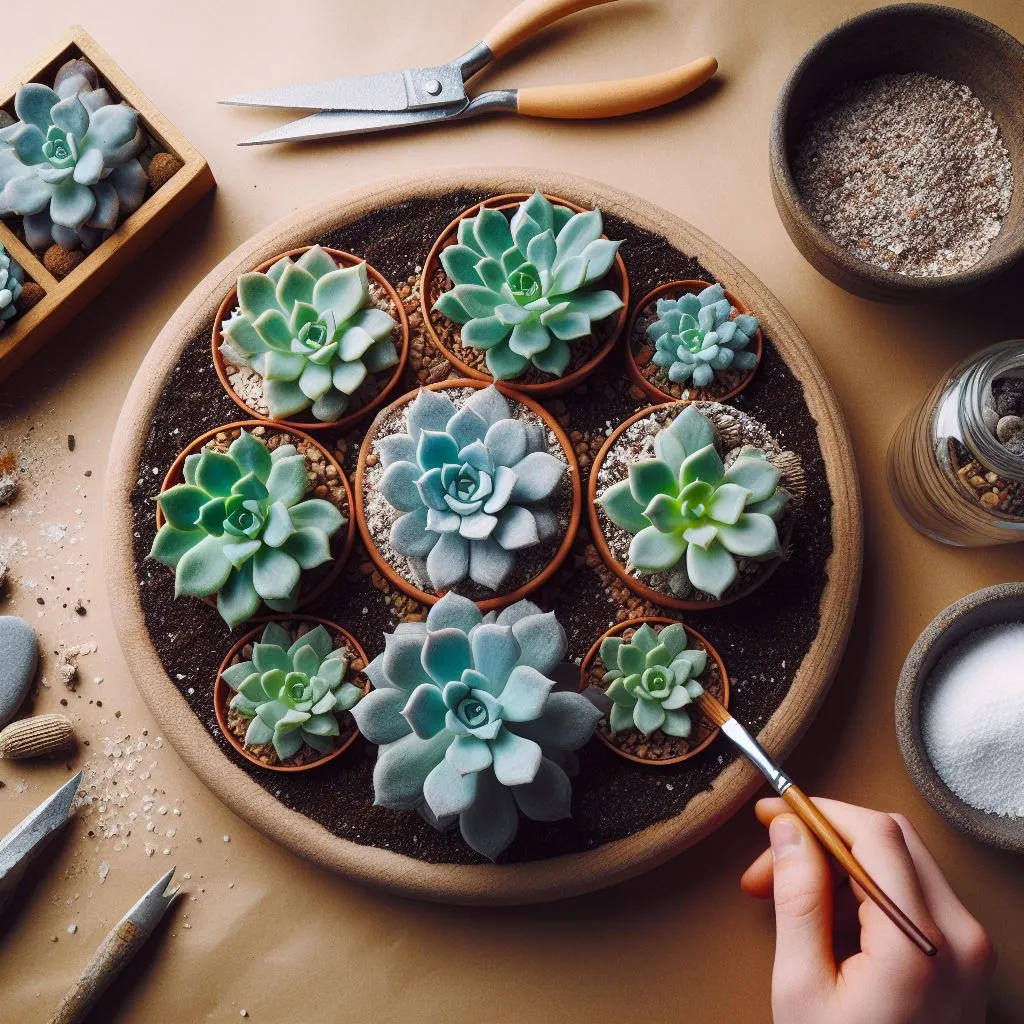Propagating Desert Succulents: A Step-by-Step Guide
Introduction to Desert Succulents
Desert succulents are special plants that can survive in arid environments by storing water in their leaves, stems, or roots. This unique adaptation allows them to thrive in dry climates where many other plants struggle. Common examples of desert succulents include Aloe vera, Echeveria, and Haworthia, each with its distinctive appearance and care requirements. Propagating desert succulents is an exciting way to grow new plants and expand your succulent collection. In this guide, we’ll explore the step-by-step process of propagating desert succulents using simple techniques that anyone can follow.

Understanding Succulent Propagation
Propagation is the process of creating new plants from existing ones, either through seeds or vegetative methods like cuttings. When it comes to desert succulents, propagation through cuttings is a popular and effective method. Unlike some plants that require complex techniques, succulents are relatively easy to propagate, making them perfect for beginner gardeners and enthusiasts alike.
Materials You’ll Need
Before starting the propagation process, gather the necessary materials:
- Healthy parent succulent plants: Choose plants with no signs of disease or pests, and healthy leaves and stems.
- Sharp scissors or pruning shears: Used for taking cuttings from the parent plant.
- Potting soil suitable for succulents: Well-draining soil is crucial for succulent growth.
- Small pots or containers: Provide adequate space for new plants to grow.
- Watering can or spray bottle: Used for watering newly planted cuttings.
- Optional: Rooting hormone: Helps stimulate root growth, especially for more challenging succulent varieties.
Step 1: Choosing Healthy Parent Plants
Successful propagation starts with healthy parent plants. Inspect your succulents for firm, plump leaves, and stems free from damage or signs of stress. Plants that are actively growing and in good overall condition are ideal candidates for propagation.
Step 2: Propagation by Leaf Cuttings
Leaf cuttings are a popular and straightforward method of propagating succulents:
- Select Leaves: Gently twist or cut a healthy leaf from the parent plant, ensuring a clean cut without damaging the leaf.
- Let Leaves Dry: Place the cut leaves in a dry, shaded area for a few days until the cut ends form callouses. This step helps prevent rotting when planted.
- Planting: Place the dried leaf on top of moist succulent soil in a small pot. Press it lightly into the soil, ensuring good contact without burying it completely. Keep the soil lightly moist, and roots will begin to grow from the base of the leaf within a few weeks.
Step 3: Propagation by Stem Cuttings
Stem cuttings are another effective way to propagate succulents:
- Choose a Stem: Select a healthy stem from the parent plant, preferably one without flowers or buds.
- Drying: Allow the cut end of the stem to dry in a shaded area for a day or two until it forms a callous. This step prevents excess moisture absorption and promotes root development.
- Planting: Insert the dried end of the stem into moist succulent soil in a small pot, burying it about an inch deep. Keep the soil lightly moist, and roots will emerge from the cut end within a few weeks, signaling successful propagation.
Step 4: Caring for New Succulent Growth
Once your succulent cuttings have developed roots and started growing, follow these care tips for healthy growth:
- Light: Place newly propagated succulents in a bright location with indirect sunlight. Succulents thrive in bright light but can get sunburned if exposed to intense, direct sunlight for extended periods.
- Watering: Water sparingly, allowing the soil to dry out slightly between waterings. Overwatering is a common issue that can lead to root rot in succulents. Always use well-draining soil to prevent waterlogged conditions.
- Potting: As new plants grow, transplant them into larger pots to provide ample space for root development. Use a well-draining potting mix suitable for succulents to ensure proper growth.
Troubleshooting Common Issues
While propagating succulents is generally straightforward, you may encounter some common issues:
- Overwatering: If leaves become mushy or discolored, reduce watering frequency and ensure the soil dries out between waterings.
- Pests: Keep an eye out for common pests such as aphids or mealybugs. Remove pests manually or use insecticidal soap as needed.
- Sunburn: Succulent leaves can sunburn if exposed to intense sunlight. If you notice browning or whitening of leaves, move the plant to a slightly shadier location to prevent further damage.
Conclusion: Enjoy Your Growing Succulent Garden
In conclusion, propagating desert succulents is a rewarding and enjoyable activity that allows you to expand your plant collection and share the beauty of succulents with others. By following the simple steps outlined in this guide and providing proper care, you can watch your succulent cuttings grow into healthy, thriving plants. Remember to experiment with different succulent varieties and propagation methods to discover what works best for you. With patience and care, you’ll soon have a vibrant and flourishing succulent garden to enjoy for years to come. Happy propagating!